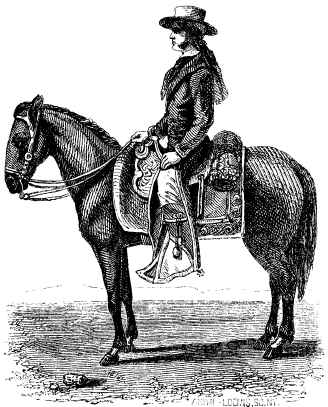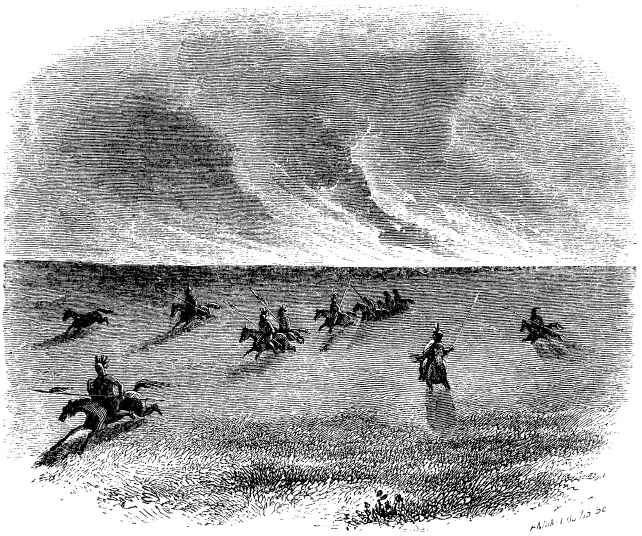756
HARPER'S NEW MONTHLY MAGAZINE.


they can not, with real
propriety, be said to exist in a truly savage state.
The Mexicans and South Americans
are all good riders, and they perform constantly feats of horsemanship
which would do credit to the Bedouins themselves. It is a common
amusement with them to turn a horse at full speed upon a point
designated by a blanket; they will charge a solid rampart with the
rapidity of lightning, and stop so suddenly that the feet of the
horse will exactly touch the wall. For a small wager some have been known
to rush at a cliff, rear their horses’ fore-legs in the air, so that they
would for a moment tremble over the dread precipice, and then whirl into
safety. The Arabs, to show Layard their great estimation of his person, on
one occasion amused themselves by similar equestrian feats. They
would gallop off at a distance, put their lances at rest, and then make
deliberately for his head. The compliment consisted in stopping their
charger suddenly short, so that the spear point would just touch his
face. He naively adds, that his life would have been sacrificed if the
well-trained steeds had made the slightest false step, or by any
inequality in the ground disappointed the expectations of their
masters.
The North American Indians
inhabiting the vast prairies which reach out from the Atlantic slope
toward the Rocky Mountains, are all excellent equestrians, and
possess an abundance of horses. They do not, however, become attached
to individuals of the species, and conse-
THE MEXICAN HORSE.
the plains extending from La
Plata to Patagonia are to be met single troops numbered by tens of
thousands. The color of the American wild horse is generally chestnut; but
hundreds are often seen which are known as “calico” or “ paint horses”
from their many colors. They differ from those of Asia in being more
easily tamed; in fact, so readily are they subdued
that

THE PRAIRIE ON FIRE